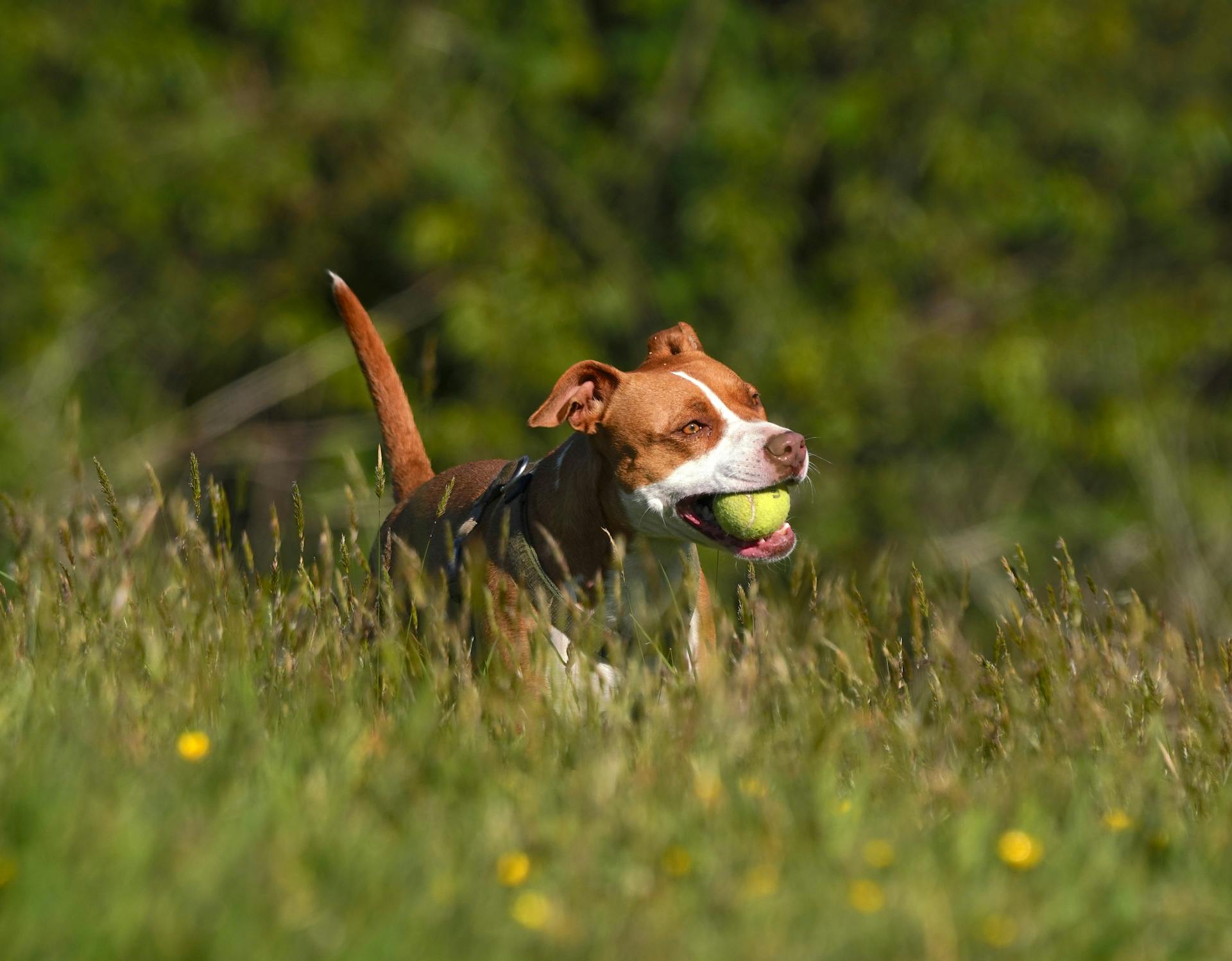
Losing a dog, especially a Pitbull, can be a heart-wrenching experience. According to research, Pitbulls have a strong instinct to track and follow scents, making them more prone to wandering off.
To prevent your Pitbull from getting lost in the first place, it's essential to keep them on a leash or in a securely fenced area. A study found that Pitbulls are more likely to escape from yards with weak or inadequate fencing.
Regular identification checks can also help ensure your Pitbull's safe return if they do get lost. Make sure their collar and tags are up-to-date and include your current contact information.
What to Do
If you've lost your dog, it's essential to get the word out quickly to increase the chances of being reunited. Put food, water, your pet's bed, and an article of your clothing with your scent on it near the last place your dog was seen.
Immediately post fliers with pictures of your dog and contact information at local vet offices, street corners, supermarkets, and anywhere else that will allow you to post them. Go door to door in the neighborhood where your dog was last seen and hand out fliers.
Post about your lost dog on community sites like Craigslist, NextDoor, and Facebook Groups. File a lost dog report on Lost Dogs of America.
Prevention and Search
To prevent your Pitbull from getting lost in the first place, it's essential to ensure they always wear a collar and an ID tag with your name, address, and telephone number.
Make sure to keep your contact information up to date with the online microchip registry site, such as the Michelson Found Animals Registry, if your dog is microchipped.
Having your dog microchipped can significantly increase their chances of being returned to you if they ever become lost.
Found a Dog
You rock for finding a lost dog and bringing it to safety. It's essential to remember that accidents happen, and responsible guardians can lose their dog.
Don't assume the dog was abused and shouldn't be returned to its guardians. Someone may be desperately searching for a lost, beloved companion.
Check the dog for ID tags with contact information. If there are no tags, start by knocking on nearby doors to see if anyone knows where the dog lives.
Community sites like Craigslist, NextDoor, and Facebook Groups, such as Lost Dogs of Wisconsin, can be a great resource to post about the found dog. Check these sites for posts of missing dogs that match the dog's description.
If you can't find the guardians quickly, take the dog to your local animal control facility. They will scan the dog for a microchip and the guardians will come to claim the dog.
Even if the dog is waiting to be reunited with its guardians at animal control, you can still help the dog get reunited faster. Take a photo of the dog and post fliers around the area where the dog was found, at local vet offices, and supermarkets.
Post about the dog on community sites like Craigslist, NextDoor, and Facebook Groups, and file a report about the dog on Lost Dogs of America.
For your interest: Can My Dog Have Onion
Conduct A Search
Conducting a thorough search is crucial in finding your lost dog. Start by physically searching your neighborhood or the area where your dog was last seen, checking backyards, green spaces, and other nearby spots.
Tell everyone you meet that you're searching for a lost dog and ask them to contact you if they see your dog, but not to chase your dog in an effort to catch them. A friendly, confident dog is more likely to be found where people or other dogs gather.
A shy, frightened or injured dog, or one lost in an unfamiliar area, is more likely to be hiding or on the run. If you learn your dog is frequenting an area, but is too skittish or traumatized to come to you or other people, start placing food and water in a safe spot within that area.
Use a motion-activated camera to see if your dog is eating the food, and once you know your dog's schedule, you can set a humane trap to capture them. Don't attempt to chase down a skittish dog, as this can drive them out of the area.
Prevention
To prevent your dog from getting lost, make sure they always wear a collar and an ID tag with your name, address, and telephone number.
Wearing a collar and ID tag is a simple yet effective way to ensure that your dog can be identified and returned to you if they ever get lost.
Ask your veterinarian or local animal shelter to microchip your dog to further increase the chances of them being returned home.
Microchipping your dog requires keeping your contact information up to date with the online microchip registry site, such as the Michelson Found Animals Registry.
Worth a look: Dog Tag Search
Frequently Asked Questions
What are the odds of finding a lost dog after 24 hours?
After 24 hours, the chances of finding a lost dog drop to around 60%, but it's still a higher likelihood than not. Despite the odds, many lost dogs are reunited with their owners within a short time frame.
What to do if I lose my dog?
Visit local shelters daily and contact animal control agencies to search for your dog, as only you truly know its appearance. Check all shelters and agencies in your town and surrounding areas
Featured Images: pexels.com


